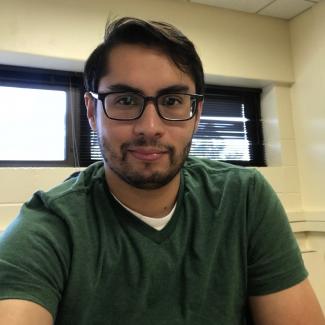Event
Physical Chemistry Seminar: Dr. Arnaldo Serrano
"What 2DIR Can Tell Us About Complex and Heterogeneous Biophysical Systems."

Dr. Arnaldo Serrano
Notre Dame
Abstract: While two-dimensional infrared (2DIR) spectroscopy has been useful for studying properties of peptides and proteins, many of those results were made on “clean”, homogenous samples. My lab’s long-term goal is to turn the sensitive and ultrafast observables of 2DIR into useful image contrast agents for complex biophysical systems, where they can answer questions related to solvation dynamics and molecular structure that few other imaging methods can address. To that end, I will present three projects from my lab that move us closer to this goal. 1: Proline-arginine (PR) dipeptide repeats are an example of a growing number of intrinsically disordered proteins (IDPs) that can assemble into membraneless organelles by Liquid-liquid phase separation (LLPS), and has also been implicated in the disease mechanism of Amyotrophic lateral sclerosis (ALS). We show that formation of droplets by PR20 accompanies changes in the Amide-I spectra consistent with folding into poly-proline helical structures, providing, to our knowledge, the first piece of evidence that LLPS can drive folding of IDPs. 2: The infrared absorption spectra of cross-α fibrils, recently discovered structures derived from the biofilms of virulent strains of Staphylococcus Aureus bacteria, are virtually indistinguishable from monomeric α-helices. As such, we performed a detailed study of the nonlinear infrared response of this system under a variety of experimental conditions and detail how polarization sensitive 2DIR, in combination with both broad-band time-domain and narrow-band frequency domain spectroscopy, together revealed a coherent nonlinear signature unique to α-fibrils. In addition, spatial scanning of the sample revealed underlying polymorphism in the fibrils, demonstrating that this peptide is capable of adopting both cross-α and cross-β fibril structure in the same environment. 3: Wide-field imaging through dielectric microspheres has emerged in recent years as a simple and effective approach for generating super-resolution images at visible wavelengths. We demonstrate that polystyrene dielectric microspheres can be used in a wide-field infrared (IR) microscope to enhance far field resolution as well. We observed an improvement in resolution and magnification when images are collected through polystyrene microspheres and anticipate that super-resolution could be achieved with the addition of high-quality IR objectives.
Research
Our focus is on the development and application of nonlinear optical methods for studying dynamic biophysical and material systems in real time.
Recent work has centered on methods of resolution enhancment in ultrafast mid-IR microscopy, the structure and dynamics of peptide-ion interacitons,
and peptide folding in liquid-liquid phase separated droplets.
http://serranolab.crc.nd.edu/index.html
HOST: SAVEN
